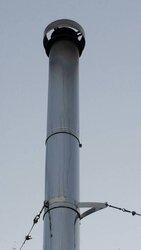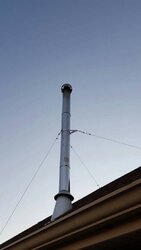I'm having issues keeping my flue Temps as high as I think they should be. I'm assuming it's a temperature issue maybe but wanted to confirm.
It's a out 45f and clear out here tonight. I put a small kindling load in log cabin style and burned it. Chimney went up to about 350 with stove about the same or less as it was warming up. Left the primary air wide open until the small stuff burned down stove we about 400 and chimney at 375 or so.
Loaded up 4 splits about 3 inches square each and let it all catch and get burning. Good secondaries and turned down the primary air to totally closed. Great secondaries stove top about 575 to 600 and holding. Chimney started dropping though clear to 260ish 16 inches about the stove.
I open the primary some and the chimney temp starts to rise. Is it just. OT quite cold enough yet and it's not drafting strong enough to pull the heat up? Or will I need to watch closing the air that far.
All the Temps are ir thermometer. Also just a terminology question so I know is flue and chimney temp interchangeable or am I using one incorrectly?
It's a out 45f and clear out here tonight. I put a small kindling load in log cabin style and burned it. Chimney went up to about 350 with stove about the same or less as it was warming up. Left the primary air wide open until the small stuff burned down stove we about 400 and chimney at 375 or so.
Loaded up 4 splits about 3 inches square each and let it all catch and get burning. Good secondaries and turned down the primary air to totally closed. Great secondaries stove top about 575 to 600 and holding. Chimney started dropping though clear to 260ish 16 inches about the stove.
I open the primary some and the chimney temp starts to rise. Is it just. OT quite cold enough yet and it's not drafting strong enough to pull the heat up? Or will I need to watch closing the air that far.
All the Temps are ir thermometer. Also just a terminology question so I know is flue and chimney temp interchangeable or am I using one incorrectly?




 !!
!!